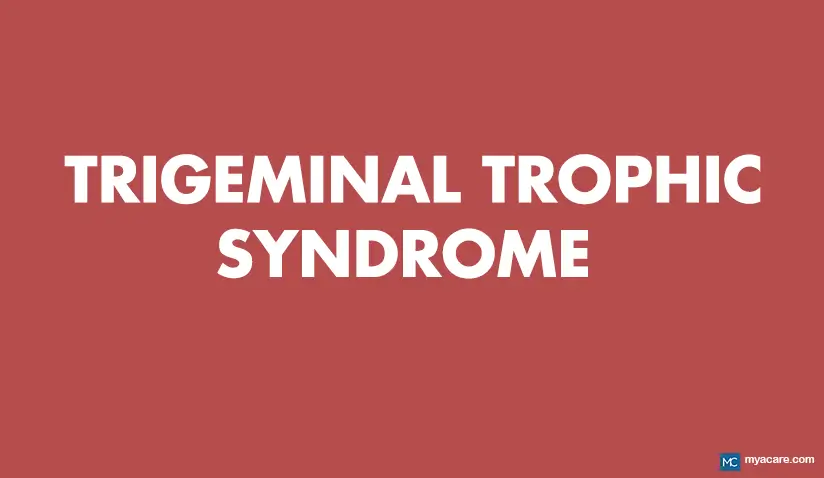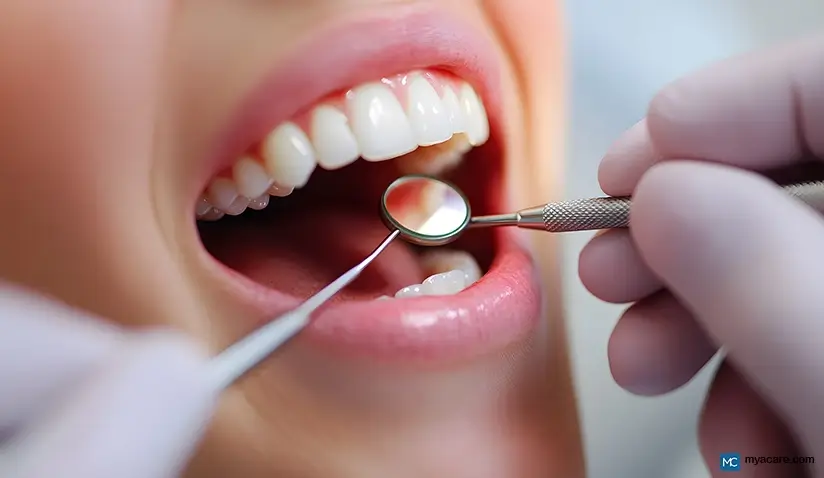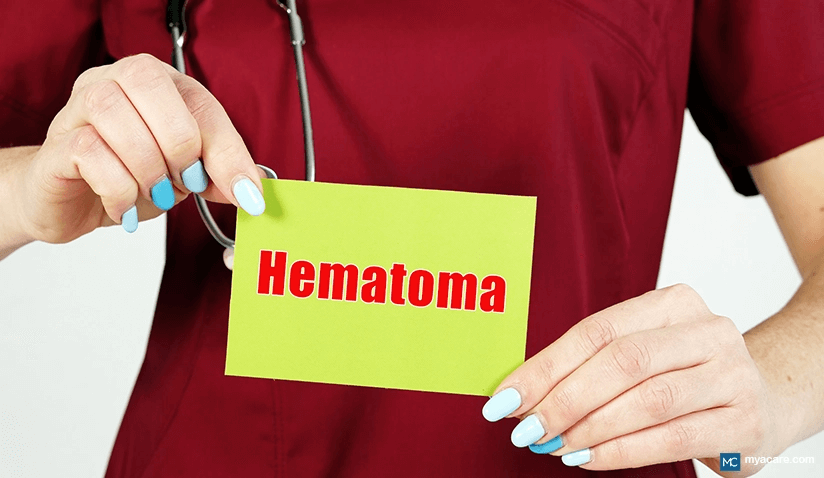Trigeminal Trophic Syndrome: Understanding a Rare Skin Condition

Medically Reviewed by Dr. Rae Osborn, Ph.D.
Trigeminal Trophic Syndrome (TTS) is a skin disorder characterized by the development of ulcers, most commonly on the nasal ala, the region where the nose flares out sideways. The ulcers result from trigeminal nerve damage or dysfunction, impacting facial sensation. TTS is rare - 60 cases reported from 1982 to 2002 - and mostly observed in middle-aged women, with the average age of diagnosis around 57 years. However, it can also occur in younger individuals.
What is Trigeminal Trophic Syndrome?
To learn about TTS, it is important to understand the trigeminal nerve and its functions.
The trigeminal nerve, the fifth cranial nerve, begins in the pons of the brainstem and travels to the face, where it divides into three branches: ophthalmic, maxillary, and mandibular.
- The ophthalmic nerve innervates the part of the face between the eyes and allows the pupils to dilate. It also innervates the ciliary body, cornea, lacrimal glands (tear-producing glands), and conjunctiva of the eye. The ciliary body controls the shape of the lens, while the cornea helps focus light on the retina. The conjunctiva is the outermost eye membrane.
- The maxillary nerve innervates the sinuses, palate, middle part of the face, cavity of the nose, and the teeth of the upper jaw.
- The mandibular nerve innervates the teeth of the lower jaw, the floor of the oral cavity, inside the cheeks, the tongue, and the facial region beneath the mouth.
The trigeminal nerve controls facial sensation and the contraction of the facial muscles. Besides sensory information, the nerve also carries motor signals, allowing us to sense touch, temperature, and pain.
The clinical triad of TTS includes facial ulcers, paresthesia (tingling), and anesthesia (numbness). People with trigeminal trophic syndrome have sores near the nose and experience changes in sensation in the areas associated with the trigeminal nerve distribution.
Causes and Risk Factors
There are multiple factors that contribute to the development of trigeminal trophic syndrome. These are described below:
- Surgical Procedures: The procedures to treat trigeminal neuralgia (pain in the face originating from the trigeminal nerve) include rhizotomy (cutting of the nerve) and radiofrequency ablation (the use of heat to remove tissue). Rhizotomy and radiofrequency ablation can cause nerve damage, which in turn could lead to TTS.
- Other forms of trigeminal nerve damage: Traumatic injury, stroke, or a tear in the carotid artery increases the risk of trigeminal nerve damage, which can cause TTS.
- Viral infections (postherpetic trigeminal trophic syndrome): Herpes zoster, which causes shingles, can also cause postherpetic TTS. TTS has also been diagnosed in a patient with HIV.
- Bacterial infections: Hansen’s disease (leprosy) and syphilis can also lead to TTS.
- Parasitic infections: Leishmaniasis, an infection due to a protozoan parasite, may sometimes cause TTS.
- Brain inflammation and tumors: Encephalitis can result in trigeminal trophic syndrome in some cases. Tumors, such as astrocytomas, meningiomas, and acoustic neuroma (a type of tumor that forms on the vestibular nerve), can also lead to TTS development.
- Alcohol injection: Injecting into a part of the nerve known as the Gasserian ganglion of the trigeminal nerve may result in TTS.
- Compulsive picking behaviors after trigeminal nerve damage are also a risk factor for TTS, as are certain psychiatric disorders and dementia.
What is Atypical Trigeminal Trophic Syndrome?
Trigeminal neurotrophic ulceration more commonly affects the skin on one side of the face near or on the nose, but there are cases where trophic skin changes, such as ulceration, can affect more of the face. Atypical TTS cases have been reported where patients had ulcers on the cheeks and chin, an unusual pattern for TTS.
Symptoms
- Altered sensations like numbness, tingling, and itching in the face (also the scalp in some cases). The tip of the nose does not usually develop a tingling sensation because a different nerve is involved.
- Self-inflicted skin ulcerations in the nasal ala (ala nasi) or other areas innervated by the trigeminal nerve. The nasal ala neurotrophic ulcers are often crescent-shaped. There may also be ulcers inside the nose.
- Scarring and skin atrophy may occur because of the ulcers associated with TTS.
Complications
The nasal ulceration associated with TTS may become chronic, persisting for several years. TTS can have a psychological impact, with patients developing conditions such as clinical depression.
Diagnosing Trigeminal Trophic Syndrome
The diagnostic process involves the following:
- Clinical examination and patient history: This is often done to rule out other conditions.
- Neurological assessment: This is helpful in diagnosing TTS and deciding on treatment methods.
- Biopsy (in some cases): To rule out other skin conditions. Positive biopsy results typically show ulcerated tissue with some inflammation.
- Laboratory tests: Tests may be done to rule out other conditions, such as autoimmune disease.
- Imaging studies: X-rays may be performed to look for areas of damage to the nerve.
Differential Diagnosis with Other Skin Disorders
Viruses: herpes zoster, herpes simplex
Shingles are caused by the herpes zoster virus. Symptoms include painful, fluid-filled blisters that develop along a nerve. People may also have a fever and headache. The fluid-filled blisters caused by the herpes simplex virus may develop in the mouth or genital area, depending on the type of virus. TTS, compared to herpes, produces ulcerated areas of skin on the face, especially the nose, and may lead to loss of sensation.
Autoimmune disorders
Autoimmune illnesses often cause fatigue and a fever. There may also be skin problems, such as a butterfly-shaped skin rash in the case of lupus. However, TTS skin problems involve ulceration, most often associated with the nose.
There are other autoimmune disorders that can cause ulceration and can be confused with TTS. For instance, systemic vasculitis (inflamed blood vessels) and granulomatosis with polyangiitis (swelling of blood vessels in certain organs) can be mistaken for TTS. Systemic vasculitis includes other signs such as weight loss and fever. On the other hand, granulomatosis with polyangiitis exhibits signs such as upper respiratory symptoms, joint pain, and fever.
Common skin cancers
Basal cell and squamous cell carcinomas can be confused with TTS since they also cause skin ulcers. However, a skin biopsy can help determine if an ulcer is due to cancer or a disorder other than TTS.
Factitial dermatitis
Also known as dermatitis artefacta or factitious dermatitis, it is a psychiatric condition in which the patient intentionally picks at their skin. It can be distinguished from TTS by the absence of neurological signs.
Treatment and Management
The treatment of TTS is challenging. Therapeutic approaches mainly focus on symptom management, which can be classified as follows:
- Wound care and infection prevention:
Patients should not pick at ulcers since it makes them worse and prone to infection. They can be encouraged to wear gloves. Using a thermoplastic mask also helps. The mask is placed over an ulcer, which promotes healing and allows the skin to regrow. Silicon sheets and bandages can be used as protective devices to cover ulcerated areas to help the tissue heal.
- Pharmacotherapy, topical medications, and Botox:
N-acetylcysteine (NAC) at a 600 mg dose taken twice a day can help some patients with skin ulceration due to TTS. This medication has anti-inflammatory properties and also acts as a neuromodulator.
Topical tacrolimus (0.1%) is used to treat itching in the affected area. Mupirocin 2% ointment is sometimes used where the skin is infected.
Using botulinum toxin type A injections along with a pulsed radiofrequency has also helped with itching of the trigeminal nerve in patients with TTS.
Medications may also be prescribed to help with nerve discomfort.
- Neuromodulation:
Various methods of neuromodulation can be used to treat TTS. Transcutaneous electrical stimulation helps healing by improving the blood supply. This method involves applying a low electrical current to the skin.
Stellate ganglionectomy (removal of the stellate ganglion) is another method used for treating TTS.
Ionizing radiation (radiotherapy) is also used to treat TTS.
- Skin grafts:
Surgical intervention may be needed where skin damage is not reversible. A scalp-based flap reconstruction, which includes part of the temporal artery, can be done to replace tissue where a large lesion is present.
In addition to the treatment approaches discussed above, counseling, psychological support, and behavioral therapy are equally important in addressing self-mutilation and helping patients with TTS.
Research and the Future
Ongoing research into TTS continues to explore advancements in its treatment and management, including new surgical techniques. For instance, dual cross-face nerve grafts were recently used to treat facial ulcers in a patient who rapidly healed from the procedure.
Conclusion
Living with Trigeminal Trophic Syndrome can be challenging due to its symptoms and the impact on daily life. However, with growing awareness and emerging treatment approaches, including nerve-targeted therapies and supportive care, there is increasing potential to manage the condition more effectively and enhance patient well-being.
To search for the best health providers for Dermatology in Azerbaijan, Croatia, Germany, India, Malaysia, Singapore, Slovakia, Spain, Thailand, Turkey, The UAE, the UK, and the US, please use our free search engine.
To search for the best doctors and healthcare providers worldwide, please use the Mya Care search engine.
The Mya Care Editorial Team comprises medical doctors and qualified professionals with a background in healthcare, dedicated to delivering trustworthy, evidence-based health content.
Our team draws on authoritative sources, including systematic reviews published in top-tier medical journals, the latest academic and professional books by renowned experts, and official guidelines from authoritative global health organizations. This rigorous process ensures every article reflects current medical standards and is regularly updated to include the latest healthcare insights.

Dr. Rae Osborn has a Ph.D. in Biology from the University of Texas at Arlington. She was a tenured Associate Professor of Biology at Northwestern State University, where she taught many courses to Pre-nursing and Pre-medical students. She has written extensively on medical conditions and healthy lifestyle topics, including nutrition. She is from South Africa but lived and taught in the United States for 18 years.
References:
Featured Blogs



